Reuters — El Nino weather conditions will continue through the Northern Hemisphere during April-June 2024 with a 62 per cent chance, a U.S. government weather forecaster said on Thursday. “Above-average […] Read more
Tag Archives pacific ocean

El Nino to continue through Northern Hemisphere spring, U.S. forecaster says

World could face record temperatures in 2023 as El Nino returns
New record highs 'more likely than not'
Brussels | Reuters — The world could breach a new average temperature record in 2023 or 2024, fuelled by climate change and the anticipated return of the El Nino weather […] Read more

U.S. forecaster sees 62 per cent chance of El Nino developing during May-July
Argentina, parts of U.S. could benefit; Asian crops may not
Reuters — A U.S. weather forecaster on Thursday predicted a 62 per cent chance of the El Niño phenomenon developing in the Northern Hemisphere during May-July, and a strong chance […] Read more
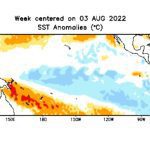
La Nina conditions to continue, but odds lower into winter
Reuters — Chances for La Niña are expected to gradually decrease from 86 per cent in the coming season to 60 per cent during December to February in 2022-23, a […] Read more

La Niña likely to continue into spring, U.S. forecaster says
Reuters — La Nina conditions are likely to continue during the Northern Hemisphere spring, a U.S. government weather forecaster said on Thursday. The La Niña weather pattern, characterized by unusually […] Read more
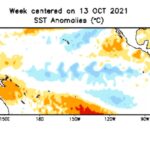
Another La Nina winter predicted
Polar vortex to chill Prairies, more snow further east, AccuWeather says
Data compiled by a U.S. federal weather forecasting agency show La Nina conditions have developed over the central Pacific Ocean and are likely to linger through February. And La Nina, […] Read more
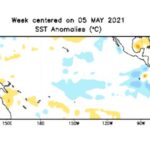
La Nina done, U.S. CPC says
Neutral weather likely through summer
Reuters — A U.S. government weather forecaster said on Thursday La Nina has ended and El Nino-Southern Oscillation (ENSO) neutral conditions are likely to continue through the Northern Hemisphere summer. […] Read more

WMO officially calls a La Nina winter
MarketsFarm — A La Nina weather event has officially developed in the Pacific Ocean and is expected to continue into 2021, affecting temperatures, precipitation and storm patterns around the world, […] Read more
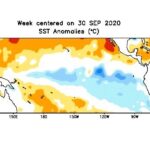
La Nina to bring colder, drier winter
MarketsFarm — There’s a La Nina poised to exert influence on the coming North American winter, according to Drew Lerner, senior agricultural meteorologist for World Weather Inc. in Kansas. A […] Read more
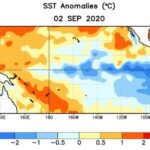
La Nina present, 75 per cent chance seen through 2020 winter
Reuters — La Nina conditions were present in August, and have a 75 per cent chance of continuing through the Northern Hemisphere winter of 2020-21, a U.S. government weather forecaster […] Read more
